My Blossoming Romance with a Fine Young Fuji, the X-T2
I was once torn between a 10 year love affair with my Canon and a blossoming romance with a newly acquired pre-production model of the Fujifilm X-T2. After posting my initial thoughts on the X-T2 I decided to give it a proper go, leaving the Canon sitting in the drawer, rather than shooting with both throughout sessions. It was scary at first but after just a few more weeks playing around with my new toy I can honestly say I’ve found a clear winner.
The Fuji has the edge over the Canon in ways that leaves the Canon rather unappealing. Returning to it provides no thrill or excitement which is not how I want to feel when picking up a camera.
My Canon 5D MKIII is solid and reliable I’ll admit. Its been everything I needed since I bought it. I began with the MK I and upgraded to the MKIII. I thought I’d want nothing else but a Canon. I thought I’d stick with it right to the very end. It had everything I needed and could ever need. Or so I thought.

I’d been hearing a lot about mirrorless cameras and how wonderful they are for being smaller and lighter. Great for a wedding photographer I thought. But I am studio based so had little need to worry about weight and size. All that mattered to me was quality. Weight and size was never really an issue. If anything the larger camera appealed more as its size surely looked more impressive to clients.
But I did want a smaller camera for personal use. I’d stop taking pictures for fun because my camera was just too big, bulky and expensive to want to take it out with me. I’d spend the entire time worrying something might happen to it and half the time with an aching shoulder from lugging it around. By this time more and more of these cute, or shall I say sexy, cameras were popping up all over the place. Left right and center I was finding photographers switching to Fuji and enjoying photography in ways that I simply wasn’t. I felt stuck with the old ball and chain sitting at home.
So I started asking around a little more. I found not just the wedding photographers switching to them but even commercial ones. Someone I had great respect for told me he had started shooting full campaigns with the Fuji cameras. They had become capable of standing up in a commercial environment. I now found myself intrigued. Perhaps I could have the best of both worlds in one camera.
Then, as incredible luck would have it, I was recommended to be a tester for Fuji, coming in from the viewpoint of an DSLR user. And I was given the X-T2, their latest and the camera that would suit me best as it happens. Suddenly I felt excited about picking up a camera again. I think I forgot what that felt like. The Canon had become just a tool, a necessity to get the job done.
The X-T2 on the other hand is a sexy little beast that goes beyond just getting the job done. The more time I spend with it the more I loath returning to the Canon. The thrill just isn’t there. I’ve fallen out of love with my Canon gear.

So what is it that attracts me so? Well let me tell you.
1. The Fuji X-T2 is a beautiful camera. I realise this doesn’t add anything to the camera’s ability but I just thought I’d get this one out of the way before we carry on. And it is the feature that attracted me to the Fuji range of cameras in the first place. If anyone from Fuji is reading this, I’m still seriously hoping this camera is released in a silver version. I love the retro film camera look that you do so well.

2. This system is much smaller and lighter than my Canon. Like I said in a previous blog post when I shared my initial thoughts, I first thought the size and weight wasn’t as significant as I had hoped. It wasn’t until returning to my original kit that I really noticed the difference. And that difference just gets greater the longer I stay away from my old kit.
I used to avoid using my 70-200 2.8 L lens because it was rather heavy and to be honest I don’t believe I did particularly well hand holding it as I was often left with less than perfect focus. Since switching to the X-T2 my preferred lens is the 50-140mm which is the equivalent of 76-213mm. I just weighed this on my kitchen scales against the Canon 5D MKIII with my old preferred lens the 24-105mm and the Fuji came in at 1590g whereas the Canon with the smaller lens came in at 1676g. Not only that but I think of all the photos I’ve taken recently with my new Fuji kit I only missed the focus with the big lense a couple of times. I even plan on using the X-T2 with the 50-140mm lens to do my school photography jobs this year. I would never have dreamed of shooting with the 70-200mm even though it was the more appropriate lens for the job simply because there is no way I could have handled shooting all day long with the weight of that lens and camera. I can’t see it being a problem with the X-T2.
3. The LCD is a very useful tool. I left this long ago in favour of the viewfinder which is more popular to use in DSLRs (at one point being the only option but newer cameras like the 5D MKIII offering liveview meant we could now use an LCD rather than just the viewfinder). However the 5D does not offer a rotating screen making it considerable less useful. The X-T2 not only flips out horizontally showing a landscape image but also flips out on the opposite axis enabling its use in portrait orientation. I never realised how much I would love this feature. It feels a bit like how I imagine shooting with an old medium format film camera would with a waist level viewfinder. That is something that has always appealed to me.
This means I can shoot from a more appropriate viewpoint while still being comfortable. No more crouching down or bending slightly to get just the right height. I also have much more eye contact with my subject and they can hear me better too since I’m no longer talking into the back of my camera. I am loving working this way.

(I didn’t need to be lying on the floor for this shot which made this shoot so much easier)
In addition, I’m able to shoot babies, or any subject for that matter, from above without having to guess at composition and focus point while having my camera out at arms length and not being able to see what I am shooting. Now I can see everything.
4. Focusing Points, of which there are 325 that stretch to all four corners, as opposed to the 5D which basically forms a cross of available focus points. The corners are missing in the Canon (and other DSLR’s I believe). So if my desired focusing point happens to be in a corner I have to focus and recompose which doesn’t always leave the sharpest point where I want it, particularly when shooting wide open. Shooting at f1.2 on babies eyelashes would never work with this method. And manually focusing with my eyesight wouldn’t help much either. (For non photographers or aspiring photographers, just so you know, photography is very bad for your eyesight.) I don’t yet own a 1.2 lens but it is now on my wish list.
5. Sharp Images. The X-T2 produces wonderfully sharp images that leave me amazed every time I look at the detail. Sharpening in post is pretty much a thing of the past.

6. Wireless Connectivity. This I am having so much fun with. I can now upload professional quality images to social media where ever I am, whenever I want. I’ve been avoiding using Instagram for what its meant for (instant snaps of whats going on now) because I hate the quality of the images I produce from my tablet or phone. I am not someone who buys a phone for the quality of its photographs. To me a phone is for making phone calls or texting. I want the best camera possible for taking photographs and for all images I put out there to represent the quality that I wish to be known for. Well now I have the quality of a professional camera with the convenience of a phone or tablet.
This is also going to prove valuable when doing commercial jobs where I want to show the client some of the work as we go without needing to upload to a laptop.
7. Film Simulation Modes. I never thought that this would ever appeal to me. Why would I want this when I fully plan on doing my editing back at my desk, beginning with a raw file. Well now if my vision of a final image happens to be in black and white, I have several black and white film simulation modes that enable me to shoot in black and white, while still retaining all the colour information in the RAW file. I find it helps in composing and exposing the scene to see in black and white just how the final image is intended. In addition to all the black and white simulation modes they also have some for colour modes that benefit both landscapes and portraits. They are well worth a play. I find these also help with my inspiration as I shoot.

(This is one I shot in black and white and transferred to my tablet to process in Snapseed)

8. ISO Invariance. What I can’t understand is why more people aren’t talking about this. I only stumbled across an article on it myself and then played around with my 5D MKIII and the X-T2 and discovered that there was an incredible leeway available with the X-T2 that just isn’t there with the Canon. This is all down to how and when the Fuji processes exposure. I’m not going to go into the detail here as I don’t fully understand it myself. To read more about it here is the article I first came across.
Now I know some of you are thinking, why do you want this? Get the exposure correct and you don’t need it. Well first, mistakes can happen. Maybe we had an error in judgement that when back at the computer we realise we’d like to fix. But more importantly, if preserving the highlights in a scene is essential this is a great tool to have. ISO Invariance will allow you to expose for the highlights and correct the shadows in post. And it can allow you to shoot at a lower ISO than necessary which will mean less noise in the well exposed areas. Be forewarned though. Correcting exposure back in post will introduce noise to the same level as if you shot at a higher ISO however it will keep the noise levels down in all the highlights that remain untouched. As you can probably imagine, this ability will work brilliantly with low light photography.
Here are some examples of how I’ve started taking advantage of this feature already. These were each taken on the same day when I was playing with the camera in my garden. The first is of my daughter when I wasn’t really paying attention to exposures. I failed to realise that the camera was set to spot metering, which as she moved caused it to give sporadic readings, resulting in an underexposure of the key elements of the image. It did however end up preserving the highlights which proved much more valuable. And the fact that this camera is ISO Invariant meant that I was able to recover all the details in the shadows making it a well exposed image and one which I love.

(The image exported from Lightroom with no adjustments)

Then later that evening when I noticed the sky changing colour in a rather magical way, although unfortunately just before BBQ was being served, I quickly took a few snaps and utilised this new found technique to expose for the sky, knowing I could recover the shadows later in post. Below is the before and after images along with an image taken where I exposed for the shadows showing that there is no detail left in the highlights for me to recover)
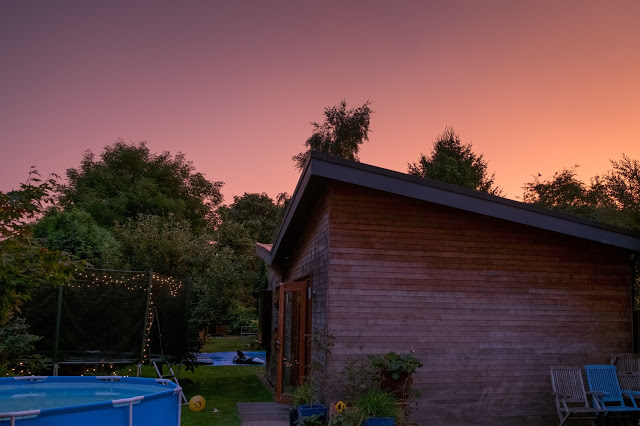
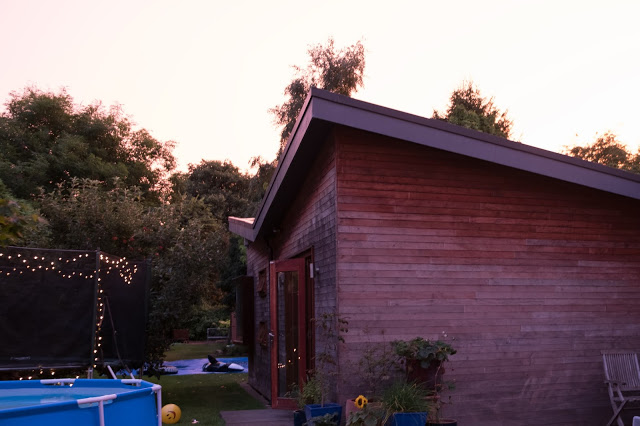
(This image was taken exposing for the shadows- there is virtually no detail left in the sky and no alterations in Lightroom would bring back the beautiful sky seen in the images above)
N.B. This doesn’t go the other way, however. You can recover detail from shadows well but you cannot recover detail in blown highlights.
But I still need to practice with this feature to gain a better understanding of its uses. At that point, and once I’ve got some suitable examples to share I think I might write an entire blog post on the subject.
9. Panoramic Images. Professionally, I don’t need this. But when I am out shooting for fun, I love it. I recently spent the weekend in Devon and I made great use of this function, much to the annoyance of my husband who often had to hear the repeated shutter clicks as I pivoted on the spot. What a cool feature. This I plan to use every time I go anywhere interesting. The image below is one I wirelessly transferred from the camera to my tablet and edited using Snapseed while at the campsite. I love it!
10. The Cost is Very Reasonable. This was highlighted for me even further when Canon released the 5D MKIV at its pre-order price of around £3600. This price tag does not sit well with me. It has basically been my policy to purchase every other release of the my camera bodies. I’ve gone from the 20D to the 5D MKI and then to the MKIII. That tends to happen about every 6 years. So technically I’m not ready to purchase another until the MKV is released but seeing the price tag of their latest release has me thinking I can find better ways to spend that kind of money. With the X-T2 sitting much more comfortably at £1399 this camera system just makes more sense. In fact, with the Canon price tag of £3600 I could actually buy the X-T2 and a few lenses, which sounds a whole lot more appealing to me. And its entirely likely that that is what I would have done rather than spend the money on a camera body on its own had I not just been given the X-T2 to test. And now rather than buying the new camera body I can spend the money on new lenses instead.
I could go on for ages discussing some of the less significant features but I’ll just leave it here as I fear this blog post is getting too long as it is. I tend to get carried away when writing so please excuse me if you find this all a bit long winded.
So what don’t I like about the new X-T2? Well not a lot really. I’d say there is really only one thing I am not keen on and that is the ISO 200 being the base ISO. Canon has this at 100 which isn’t drastically better. I’m finding already that this makes a difference to me. On occasions when I like to shoot wide open I am unable to do so in most of my lighting setups. I’m going to need to purchase a neutral density filter in order to do this.
I don’t really know why camera manufacturers aren’t working on the lower end of the ISO scale. High ISO’s seem to be the focus even though there are plenty of reasons photographers will want to shoot at lower values. I mean, just look at film. Film went as low as ISO 25 (I’m not aware of anything lower but I could be wrong). I would love this. So again, Fuji if you are reading this, please consider this for future cameras (or firmware updates if this is even possible). Although I’d be quite happy with just reaching as low as ISO 50, I think. But then we always want more so I can’t say for certain that I’d stop there.
Well there you have it, the reasoning behind leaving the Canon in favour of the X-T2. I look forward to creating so much with this beautiful little camera. Most of which I’ll be sure to share here.
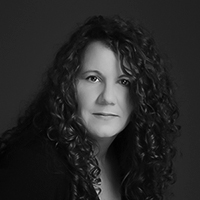
Originally from Toronto, Canada but living in England (Leicestershire) since 1998, multi award winning Christina has been building a successful studio portrait business since 2006. She has dedicated herself to developing the skills necessary to provide the pinnacle of quality in portraiture, dedication that has been recognised and rewarded in the fact that she now counts herself among the most select 1% of photographers to have attained the level of Fellow with the SWPP. Christina’s unique and highly skilled pieces have seen her named Portrait Studio, Pet, and Baby Photographer of the Year with the Societies, along with Family Portrait Photographer of the Year with the MPA, testament to her consistently high standard of work, no matter the subject.









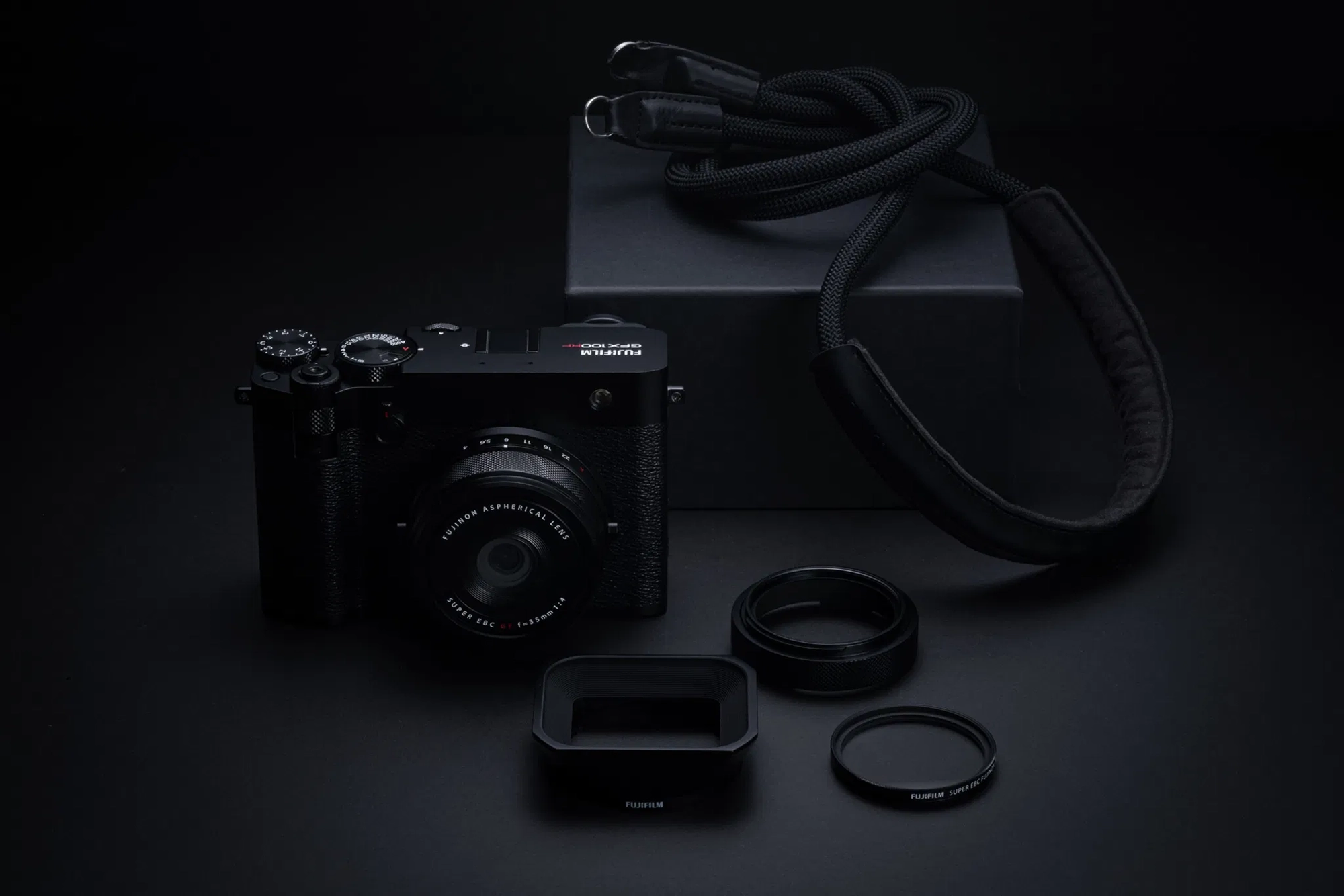
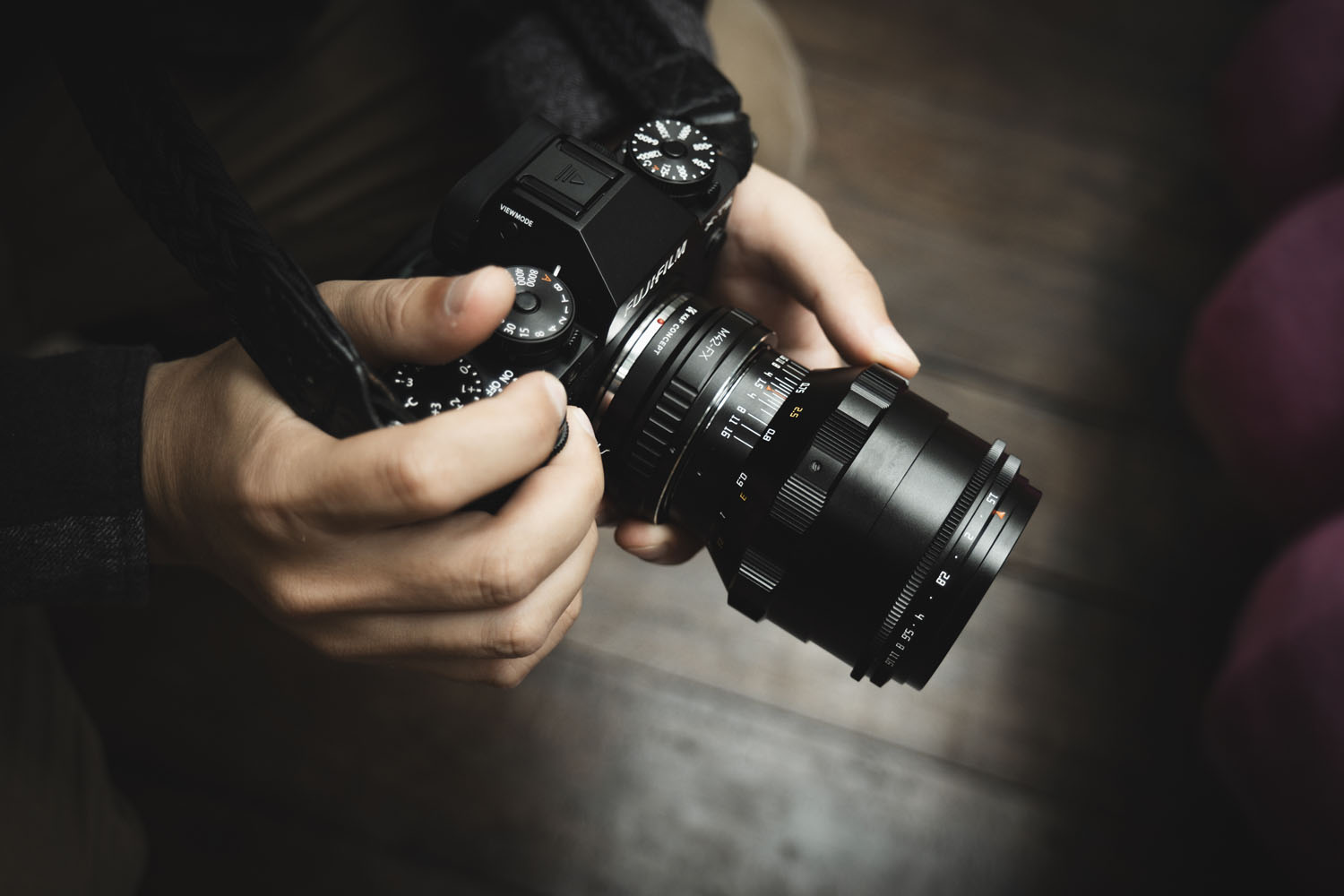

Robert Thompson
September 25, 2016 @ 7:33 am
Nice review of reasons to switch to Fuji. I would gladly trade the 4k video for a low ISO and longer lasting battery.
rsramkis
February 7, 2017 @ 2:12 am
I was just thinking about the lowest ISO being at 200. The ISO dial does go down to ISO 100 but then I believe it shuts off the dynamic settings that help preserve highlights.
For outdoor shooting i wonder if you could use the electronic shutter to shoot faster so you can shoot wide open. The only challenge using the electronic shutter is the way it shoots different bands across the sensor could cause exposure issues. Plus might need to use a tripod. But food for thought.
I also made the big jump from EOS 50d to x-T2. So allot of what you are experiencing I am as well. So it is comforting reading your article and learning from your observations.